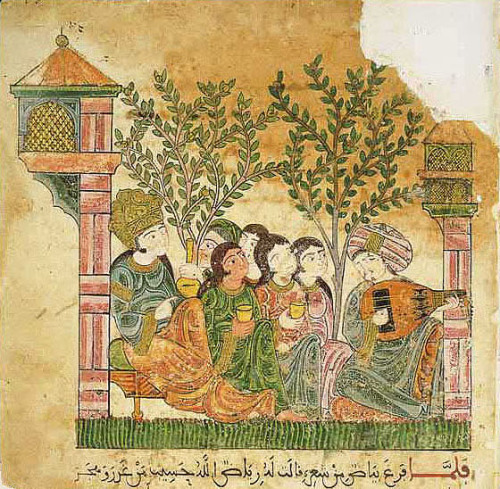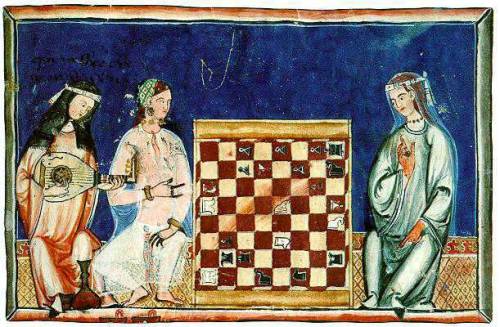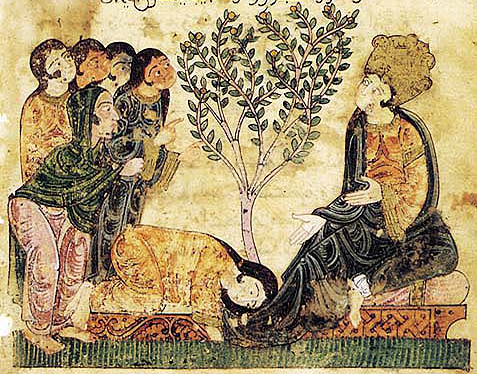al-Andalus/Muslim SpainAndalusian women’s dress between 8th and 12th centuries was quite varie
al-Andalus/Muslim SpainAndalusian women’s dress between 8th and 12th centuries was quite varied. I’m just focusing on Muslima dress, but Christian and Jewish is just as fascinating. And Muslimas were also from a variety of backgrounds. Many were from North African cultures - Berber, non-Berber Egyptians, Nubians, etc. There were also Arabs, Sub-Saharan Africans, converted Jews and Europeans, and many more.The first thing to know about muslim dress is the difference between indoor and outdoor costume. Outdoor costume is what you put OVER your indoor clothes in situations where males unrelated to you might be present. Images with ḥijāb (head scarf) should be compared with European women wearing cloaks (and head-coverings, usually)*.The earlier pictures show a variety of indoor dress. Women wear long gowns, some of them translucent. Pants are worn underneath. A few wear a shirt over top their gown. Some of them have light veils covering their hair, held in place with bands or filets. Many have decorative borders at the end of their loose sleeves, arm bands (possibly tirāz bands), and sometimes decorative collars. Bracelets and necklaces were also worn. Henna could be used to decorate the hands. Everything is loose and a variety of colours (and probably patterns) are used.To go outside, women usually wrapped a long scarf over their head and upper body. This was often long enough to reach past their waist and seem to be loosely draped and held in place with the hands if necessary. These pictures don’t show much decoration. Sometimes an outer shirt/dress was added over their indoor clothes before donning the ḥijāb.Dress was not uniform across the many cultures that made up al-Andalus. The second last image shows two (probably) Berber women, who have no ornamention on their dresses, and wear turbans over shear face veils in their outdoor dress. Also, notice the ornate head-dress of the noblewoman in images 1 and 5, and the varied ḥijāb and dress of the women in the third image.(Images from the Hadith Bayāḍ wa Riyāḍ [set in ‘Iraq, but the manuscript is from al-Andalus] and the Libro de Los Juegos [made for a Christian audience in Toledo in 1283])~~~Reminder that I am very white and have no history or fashion degree. All information should be regarded as slightly suspect~~~*I feel this is really important to bring up. I talk about a variety of cultures, and the prototypical costume for each often can’t be compared directly. Heian Japanese women were rarely seen in public at all, and usually travelled in covered sedan chairs/wagons, only one trailing sleeve visible. Karaginumo (now called jūnihitoe, Heian era robes) is therefor indoor wear. Some cultures have no distinction like this. Some, like many European cultures, blur this distinction because the monk chroniclers and artists didn’t know it existed. Women probably donned wimples when going out and left them off at home, adding a cloak when it was colder. -- source link
Tumblr Blog : 12thcenturyfashion.tumblr.com
#historic dress#costume history






